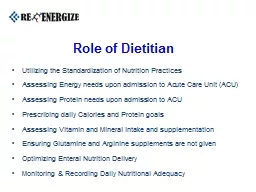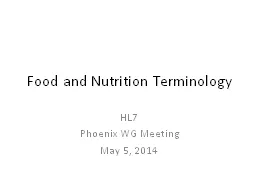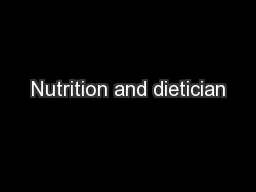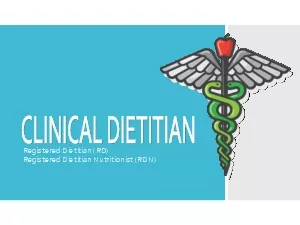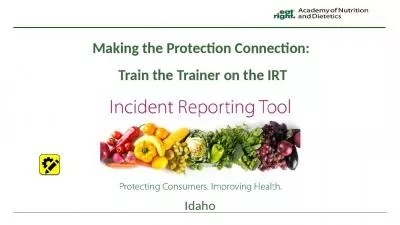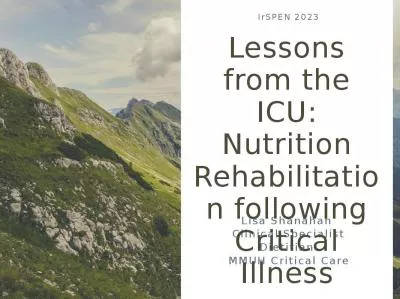PPT-Role of Dietitian Utilizing the Standardization of Nutrition Practices
Author : phoebe-click | Published Date : 2018-09-30
Assessing Energy needs upon admission to Acute Care Unit ACU Assessing Protein needs upon admission to ACU Prescribing daily Calories and Protein goals Assessing
Presentation Embed Code
Download Presentation
Download Presentation The PPT/PDF document "Role of Dietitian Utilizing the Standard..." is the property of its rightful owner. Permission is granted to download and print the materials on this website for personal, non-commercial use only, and to display it on your personal computer provided you do not modify the materials and that you retain all copyright notices contained in the materials. By downloading content from our website, you accept the terms of this agreement.
Role of Dietitian Utilizing the Standardization of Nutrition Practices: Transcript
Download Rules Of Document
"Role of Dietitian Utilizing the Standardization of Nutrition Practices"The content belongs to its owner. You may download and print it for personal use, without modification, and keep all copyright notices. By downloading, you agree to these terms.
Related Documents

